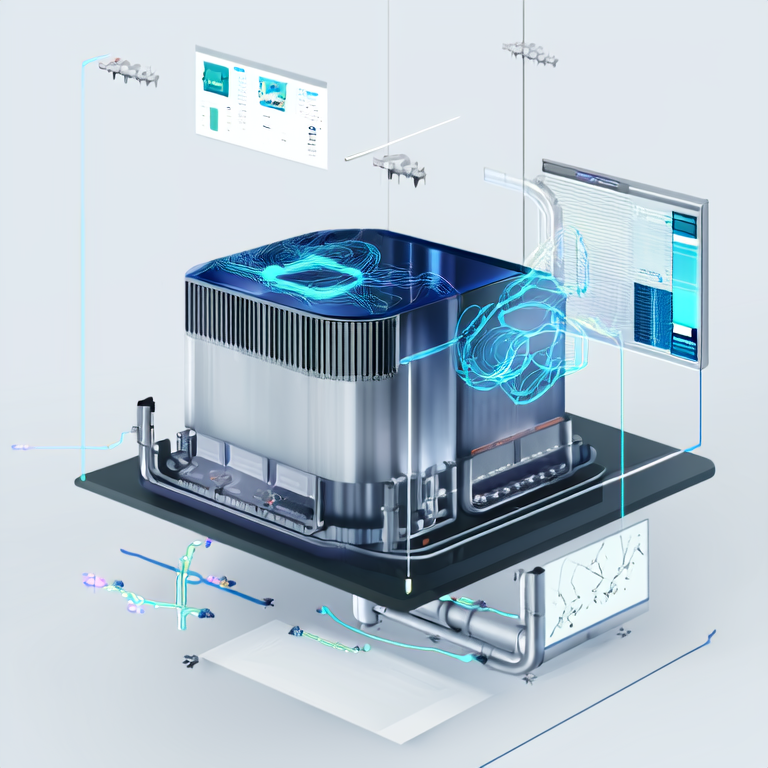- Home
- Products
- About Us
- News
- Project
- Video
- Soliutions/Oem/Custom
- Contact Us
In the world of industrial cooling, managing Chillers effectively is crucial for optimizing energy consumption and operational efficiency. Businesses often face challenges such as rising energy costs, equipment malfunction, and inefficient temperature regulation. A study by the U.S. Department of Energy revealed that poorly managed chillers can consume up to 30% more energy than necessary. Many organizations seek smarter solutions to these issues—enter IoT-enabled smart controllers. This technology can significantly enhance the efficiency of China chillers while addressing common pain points.
Many facilities experience operational disruptions due to inefficient cooling systems. For instance, Jason, a facilities manager at a large manufacturing plant in Beijing, struggled with excessive energy bills, averaging $15,000 a month, primarily due to outdated chiller systems. After installing Huateng’s IoT-enabled smart controllers, he recorded a 25% reduction in energy usage within the first month, not only saving significant costs but also improving system reliability.
Smart controllers utilize real-time data analysis, allowing for precise monitoring and optimization of chiller performance. These controllers can adjust settings based on variables such as ambient temperature, humidity, and system load, leading to improved efficiency levels. According to research from the International Institute of Refrigeration, modern chillers equipped with IoT technology can achieve energy savings of up to 50% compared to older models.
Before installing IoT-enabled smart controllers, consider the following prerequisites:
Conduct a System Audit: Assess your current chiller systems to determine their efficiency levels and identify potential areas for improvement.
Select Compatible Equipment: Ensure that the IoT controller is compatible with your existing chiller model.
Train Staff: Provide training for your operational staff on how to manage and monitor the new system effectively.
Follow these straightforward steps to implement IoT-enabled smart controllers in your chillers:
Step 1: Power Down the Chiller: Before installation, safely turn off your chiller to ensure that electrical components can be accessed securely.
Step 2: Install the IoT Smart Controller: Follow the manufacturer’s installation guide. Connect any necessary wires while ensuring that power systems remain off.
Step 3: Calibrate Sensors: Once installed, calibrate the temperature and pressure sensors to align with operational benchmarks.
Step 4: Connect to the Network: Link the controller to your facility’s Wi-Fi or Ethernet network for real-time data monitoring.
Step 5: Conduct System Testing: Power on the chiller and conduct operational tests to ensure that the controller is functioning correctly.

Some common pitfalls and their solutions include:
Error: Incorrect sensor calibration.
Solution: Refer to the device manual for specific calibration settings based on operational conditions.
Error: Connectivity issues.
Solution: Ensure that the network connection is stable and compatible with the IoT controller’s requirements.
Error: Inadequate staff training.
Solution: Organize regular training sessions and review sessions to familiarize staff with the new technology.
Implementing IoT-enabled smart controllers can dramatically improve chiller efficiency, cutting energy costs significantly and enhancing operational reliability. We recommend starting with a comprehensive system audit to identify areas for improvement. Additionally, consider collaborating with brands like Huateng for expert guidance on equipment selection and installation.
Q: How much can I save on energy costs with IoT-enabled controllers?
A: Most users report energy savings ranging from 20% to 50%, depending on the current efficiency of their chiller systems.
Q: Do IoT controllers require regular maintenance?
A: While they are generally low-maintenance, regular checks to ensure sensor accuracy and network connectivity are recommended.
Q: How do I know if my chiller is compatible with IoT technology?
A: Consult with your equipment supplier or review the specifications in your operational manual for compatibility details.
Copyright © Water Cooled Chiller, Water Cooled Scroll Chiller Supplier China All Rights Reserved | Sitemap